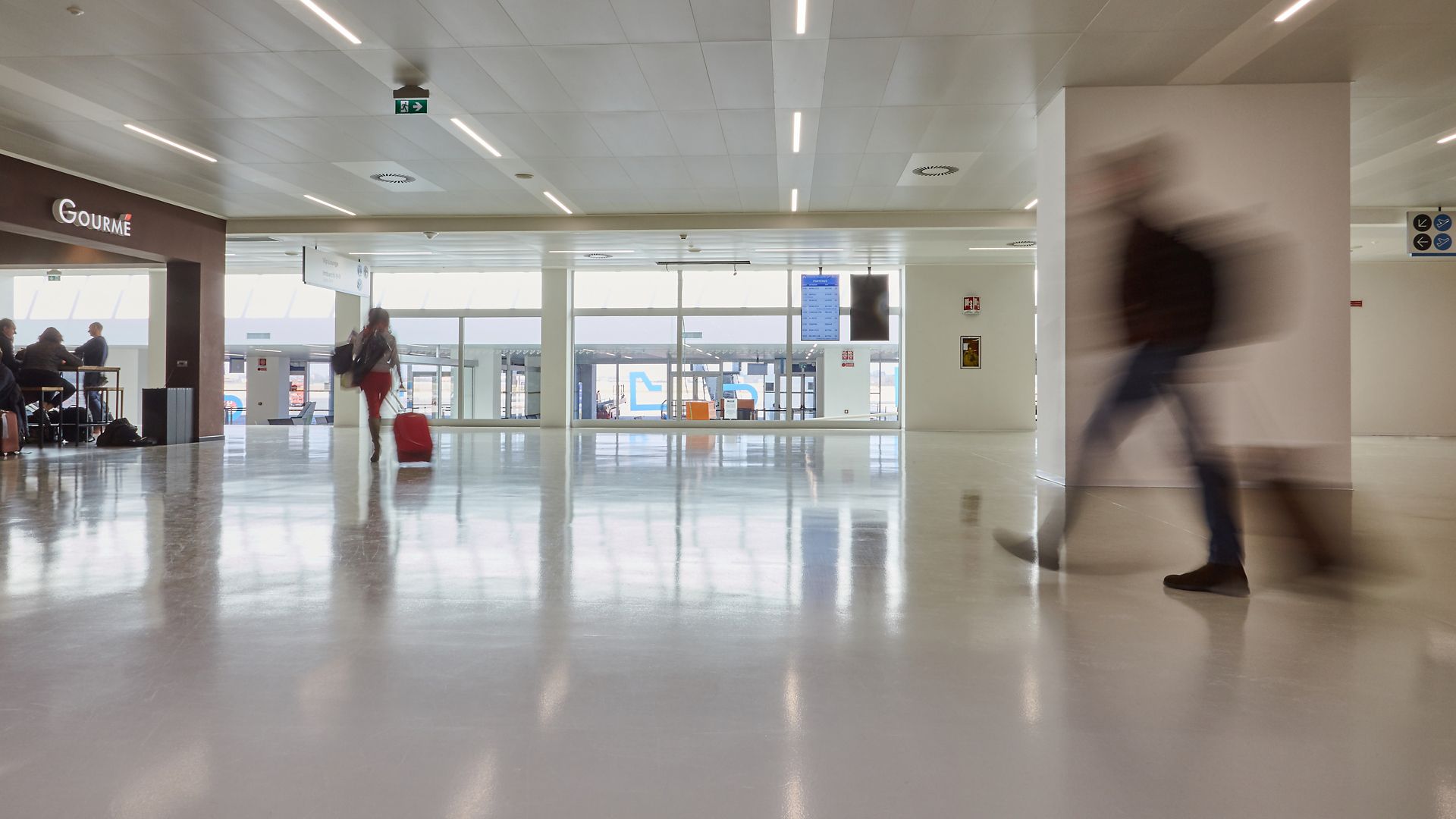North Italy’s Trieste Airport is the ideal gateway to an area that includes four countries, which is not only a great place to spend a pleasant holiday, but also perfect for finding out about how, in the heart of Europe, three different cultures —Latin, Germanic and Slavic—have met, interacted for centuries and, upon merging, have given rise to a unique multicultural heritage.
Improving the service level for passengers and airport logistics
The Trieste Airport represents the desire to renovate the airport with a more functional and modern design. Antonio Marano—Chairman of the FVG S.p.A. Airport management company—tells us about the long history of Trieste Airport: “established as a military airport, it started to have a civil role in the 1960s. Like much of the public infrastructure in Italy, it featured a significant level of obsolescence and so, together with our shareholder, the Region, we considered its complete restyling to be an urgent matter.”
Open-plan architecture, soft colors, resin flooring and plenty of natural light
The departures area of Trieste airport, which has been completely redesigned, is now more welcoming and spacious: open-plan architecture, soft colors, resin flooring and plenty of natural light, along with new ergonomically designed seats, allow passengers to wait comfortably and to relax. The fully refurbished 5,500 m2 facility includes four lines for security checks, three elevators between the ground floor and the first floor, and five gates at ground level and four gates on the first floor for passengers to embark from jet bridges.
Servicing local mobility
The work is intended to meet the objectives set out in the 2001 White Paper on European transport policy, which encourages the use of environmentally-friendly transportation to develop alternatives to road transport. From a strategic viewpoint, the hub is intended to represent the regional center for intermodality and the interchange hub servicing local mobility. This work will bring benefits to the Friuli Venezia Giulia region and its economic and social system, with positive effects overall on the efficiency of the regional transport system and, specifically, in terms of the increased number of airport passengers.
Sika resinous flooring for providing superior style and low VOC emissions during installation
Trieste airport was in need of both major restyling and some refurbishment work. The customer's request was first and foremost to replace most of the existing flooring, which was made up of old tiles, with continuous resinous flooring. In addition to providing superior style, this would be modern in appearance, easy to clean owing to the absence of any joints, mechanically strong, elastic and give off low VOC emissions during installation. Initially the customer considered a solution involving coating the existing tiles with epoxy paint, but this type of solution would not have met the desired characteristics, since the system was not elastic and had limited resistance to surface scratches. In addition, other maintenance work such as the structural strengthening of reinforced concrete pillars, beams and all joints was to be carried out.
Self-leveling and easy to apply, it is perfect for covering large surfaces in a short space of time
As there is a transit volume of approx. 700,000 people per year (2,500 people per day), Sika proposed a system consisting of colored and elastic polyurethane resins: Sika ComfortFloor® PS-23. Before the resin flooring was installed, the entire old tile flooring had to be removed. Using a grinding and shot blasting machine, the entire adhesive residue remaining on the substrate was entirely eliminated. Once all the dust had been removed, the flooring was primered with Sikafloor®-156 surface leveling mortar and epoxy binder. On hardened primer, two-part polyurethane resin, Sikafloor®-330, was applied. Since this product is self-leveling and easy to apply, it is perfect for covering large surfaces in a short space of time.
Despite the works the airport has been able to continue its normal activity
The following day the flooring was protected with a finishing layer comprising a water-based, colored, matt polyurethane resin. Thanks to the low VOC emission levels of all of the above-mentioned products, the airport has been able to continue its normal activity without having to close or divert passengers to other gates due to the solvent emissions that might normally be expected.
Sikafloor Multidur® ES-14 epoxy system was chosen for toilet facilities because this specific area is more susceptible to chemical attack. All the old floor tiles were removed and, using the grinding and shot blasting machine, all adhesive residue was removed. Afterwards, the primer Sikafloor®- 264 was finally applied. The same cycle used for the flooring was repeated on the walls of the toilet facilities, but during the mixing phase of each product the Sika® Stelmittel T thickener was added to prevent the material from dripping.
Make sure to test the flooring when you come here, but after that leave the airport and, in just 150 km, come face-to-face with the most diverse natural beauty: from the Alps with their mountains and lakes to hills covered in vineyards and to the coast with its lagoons, long sandy beaches and dramatic cliffs.
More on the airport project from Sika Italy

